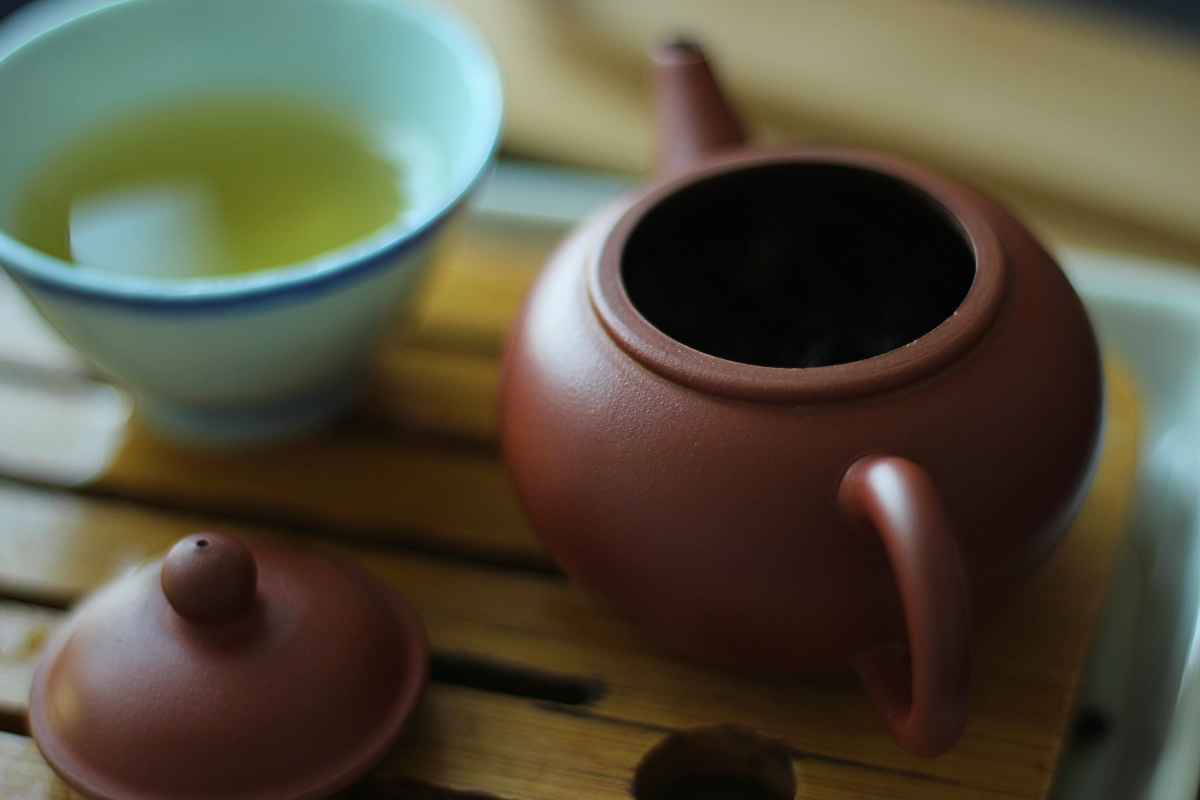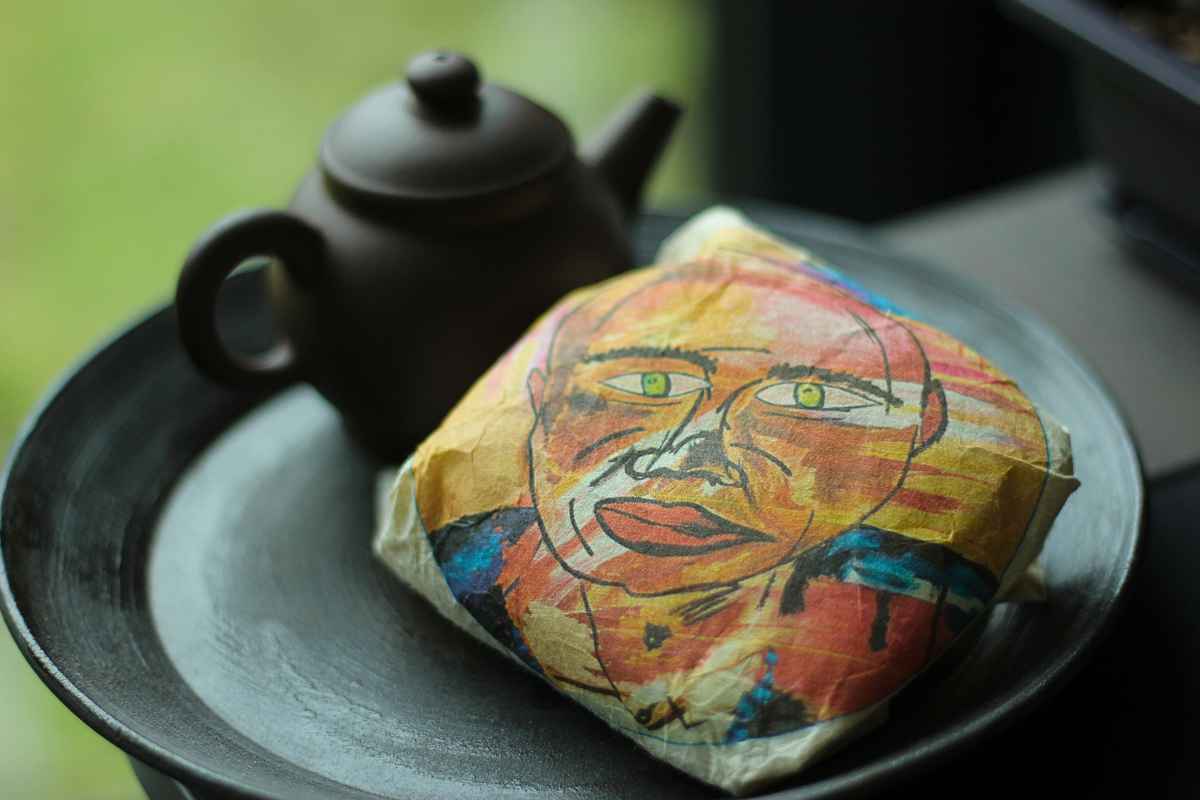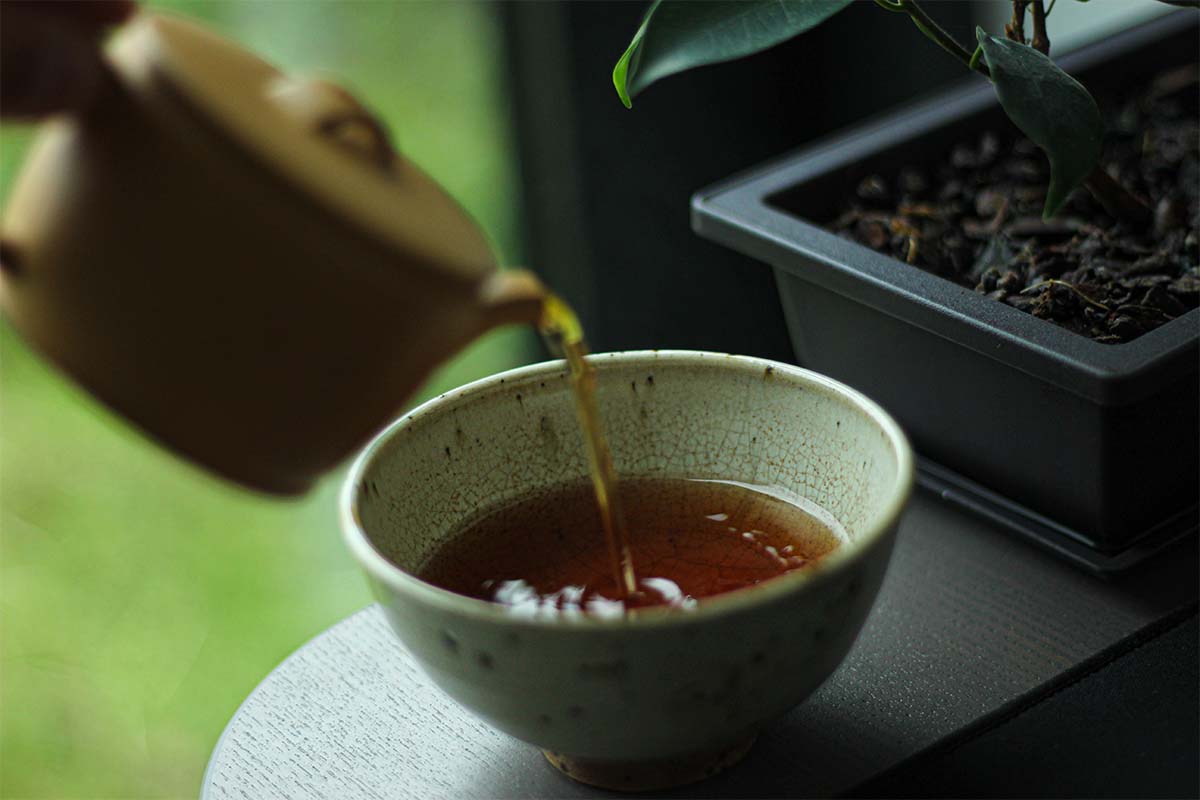Last year, I got to drink a shou brick from ANMO in Düsseldorf and it was so good that I just needed two of those bricks for myself. Once they were back in stock, I placed an order and waited for the package to arrive. When I received it, I also found another sample in the box: the 2005 Master Loo Tea Brick. I didn’t drink it right away, but I felt today was the right day to drink it.
Have you considered subscribing to Tea Adventures? You can enter your email address in the sidebar and get updates whenever I publish a new article. You never have to miss an article again by joining our mailing list.
2005 Master Loo Tea Brick
The 2005 Master Loo Tea Brick is a shou puerh from 2005. It’s one of the many teas from Sun Sing Tea in Hong Kong ANMO is selling and I’m always keen to try one of those teas. It’s manufactured by the Da Du Gong Tea Factory in the Menghai area in China’s Yunnan Province. The formula itself comes from Sun Sing Tea and Master Loo.
The colour of these leaves is dark brown and the size of the compressed leaves is quite big for a tea brick. The main aroma I’m getting is a strong woodsy fragrance.
Once the leaves are wet, the aroma has become more complex. It’s still woody, but there is also something sweet going on. I also get some light aged notes. I think the leaves are pretty big for shou puerh compressed into a brick.
Tea Tasting
- Water 99°C
- 6.8g for a 140ml Duanni teapot
- 1 rinse
- 6 infusions
Infusion 1 (20 sec): flavours are not that intense, but the brick hasn’t fully opened yet. When I really look for flavours, I’m picking up some of the woodsy notes that I also got when smelling the dry leaves.
Infusion 2 (20 sec): if I look in the pot before the infusion, I see that the brick has opened. I’m getting strong woodsy notes during this one. It’s not a wet kind of forest/wood flavours, but more of the dry wood. It’s similar to the smell you get when walking through a sawmill. I do have to say that the liquor flows easily.
Infusion 3 (25 sec): it still has the same woody flavour profile, but I’m also picking up some sweeter notes. The wood is also becoming a bit wetter and it starts shifting towards a damp forest. The aftertaste has some very light camphor notes to it as well.
Infusion 4 (30 sec): the camphor that I got during the aftertaste after infusion 3 has moved to the front. It’s also a bit sweet, which definitely makes it a pleasant combination.
Infusion 5 (45 sec): the dry wood from the early infusions is completely gone now and it’s mostly camphor and notes of a damp forest. There is also a very subtle sweetness and the aftertaste is mainly camphor that lingers for a while.
Infusion 6 (long): more of the camphor, but I feel that it’s a bit smoother and sweeter. There is a slight difference and this gives a different experience. It’s less in the flavour and more in the overall experience (if this makes sense). If I close my eyes, it feels as if I’m walking through a camphor forest.
Don’t know where to buy tea online? I made a page on the website with over 200 online shops and I keep updating it regularly. You can check it over here.
Conclusion
I got this tea as a sample with one of my orders and I’m happy I got to experience it. It’s not like the shou puerh I usually drink, but it’s a nice change. I usually go for shou with a more earthy/fruity flavour profile, but this one was woody and more focused on camphor towards the end. I really like the fact that the early infusions were completely different. It started out with notes of dry wood in a sawmill and changed into a damp forest, ultimately leading to a wild camphor forest. Fun experience with some (for me) unusual flavours.




